Walter Schreifels has played foundational foil for over 25 years, with his focused, angular, coarsely melodic guitar grounding his more adventurous, effected counterparts in Quicksand, Vanishing Life, and Rival Schools. (The later even released an album in 2011 called Pedals.)
"Originally in Quicksand, my background was coming into music through a straightforward hardcore perspective, so I took on that simplified aesthetic, similar to Fugazi," says Schreifels. "Both our bassist Sergio Vega and other guitarist Tom Capone were adding in pedals, so I earthed the band playing the straight man and opted for the more direct tone."
The Quicksand quartet rose from the ashes of New York City's late '80s hardcore scene, featuring guitarist/singer Schreifels (Gorilla Biscuits and Youth of Today), Vega (Absolution and Carnage), Capone (Beyond and Bold), and drummer Alan Cage (who was in Burn with Capone, and Beyond). A self-titled four-song EP scored them a major-label deal with Polydor, where they released the seminal 1993 classic Slip. (It even landed in Decibel's Hall of Fame.) Both recordings are equally abrasive and melodic. Then the quartet moved to Island to release 1995's Manic Compression, an album unrelenting as a sledgehammer. But as quickly as they rose, the band dissolved into the time capsule of N.Y.C.'s once-rich alternative music scene. Yet they still influenced the Deftones (where Sergio now splits time playing bass), Thursday, Glassjaw, At the Drive-In, Torche, and many others.
Schreifels went on to form other two-guitar bands, including Rival Schools with Ian Page and Vanishing Life with Rise Against's Zac Blair. And he's continued to flourish as a frontman and the midrange mattress, allowing his fellow guitar mates to bend solos, color outside the lines, and leave the pocket.
However, life has a way of challenging us and putting us out of our comfort zones. (I mean, hello, 2020!) Ian left Rival Schools, Tom departed from Quicksand, and Walter formed the bluesy, psych-rock Dead Heavens, engaging in celestial spaces and thick, sizzling guitar parts.
"At that point, I sorta had to become the 'pedal' guy, so I was like, 'screw it, I'm gonna get a wah wah. [laughs] I've heard a lot of good things!'" That led to a delay, then a tremolo, then a phaser, and now he reserves a row on his pedalboard for experimentation and tone testing. "I slowly became an effects guy, still knowing I needed their applications to our music to be tasteful. And with Dead Heavens, I wanted to broaden my palette by getting better as a player and creating a space where I could really indulge the sounds in my head."
What sort of positives has Walter recognized from his pedal liberation? "Understanding how to use a piece of equipment that before was mysterious or intimidating, and now, by having broken through that mental barrier, you can get to some new shit and create something you otherwise might not have."
And his longtime straightforward, get-the-job-done, hardcore DNA has avoided any gear-snob blind-spots and pitfalls. "I sound just lazy, but I don't have any care or concern about how I get to a result if I'm happy with it. If it takes a long time, and there's something I have to shelve for a bit, that's fine. If it's with a Roland CUBE practice amp that inspires a song or tone, that's fine, too. I just don't care."
These new gear avenues and the rekindled Quicksand officially downsizing to a trio are creating new paths for Schreifels. "I'm just really excited to continue telling Quicksand's story, carrying on from Interiors, but also through our OG catalog, and a focus on growth has been improving my playing guitar and finding new ground to break."
In this episode, Quicksand's founding frontman details why oft-forgotten Fenders and a "spooky" gold-foil Harmony were 6-string cornerstones for Distant Populations. He explains how an 8" practice combo was an ace up his sleeve while recording, and chronicles his slow embrace of effects and how they've shaped his sound and vision.
[Brought to you by D'Addario XL Strings: https://www.daddario.com/XLRR]
Preorder Quicksand's Distant Populations (out 8/13 digitally; 9/24 vinyl)
And watch videos for their two singles:
1960s Harmony Holiday Bobkat
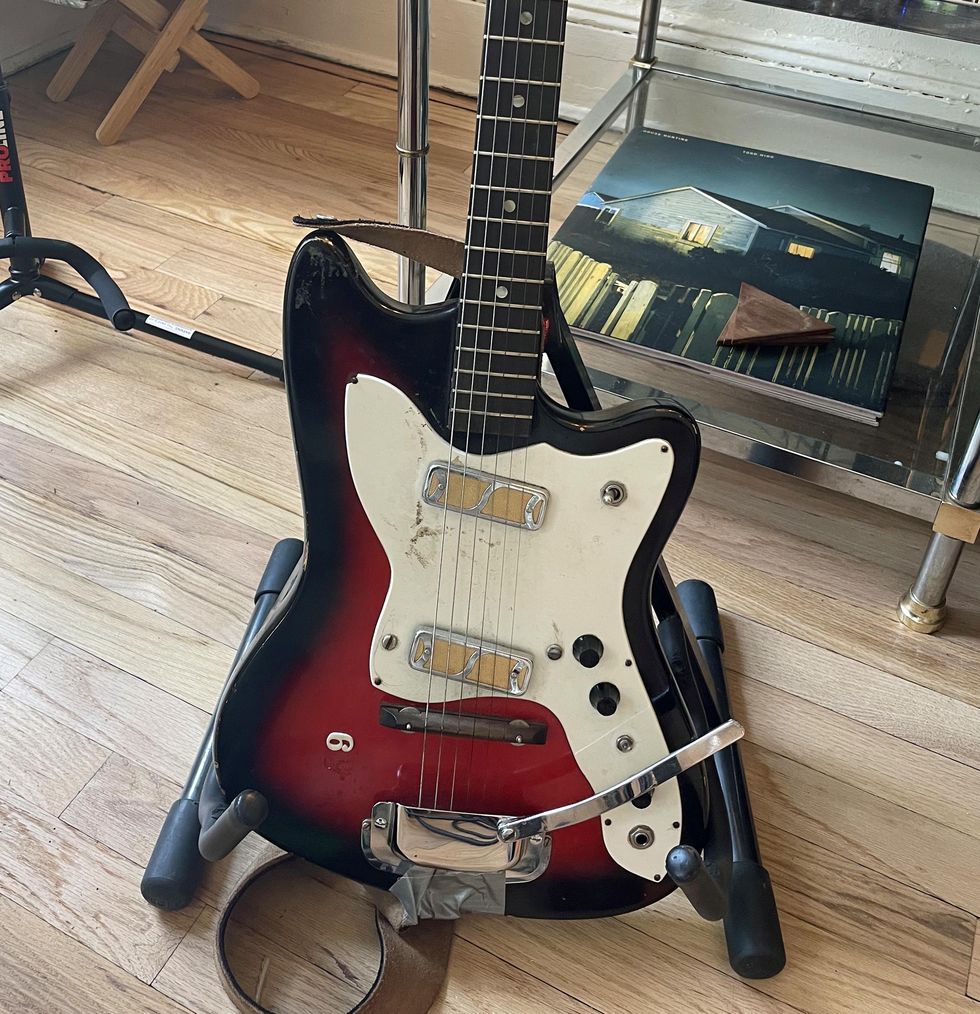
"The gold-foils in this Harmony Holiday Bobkat have a muddy, spooky, ghostly quality that really complements and fills out around the Fenders I typically use in the studio and onstage," says Schreifels. While speaking with PG in 2018, he mentioned that the above mid-'60s Harmony and a Fender Kurt Cobain Jag were the heavy hitters for 2017's Interiors, but the forthcoming Distant Populations saw it paired with a Fender Player Lead III (which we'll meet in a minute).
"Another cool thing about the Harmony is, even though I'm not a lead player, it's really comfortable and easy for me to get around the fretboard and sound like I'm doing something," admits Schreifels.
He's had the guitar for nearly 10 years, and beyond Quicksand he's used it in the studio for Dead Heavens and Vanishing Life. Typically, all of Walter's guitars take Ernie Ball Slinkys (.010–.046) and he usually lives in standard or drop-D tunings. However, "Fire This Time," off Interiors, has the low E string dropped to A, creating unison between the neck-top two strings—something he absorbed after seeing Baroness in concert.
Fender Classic Player Jazzmaster Special
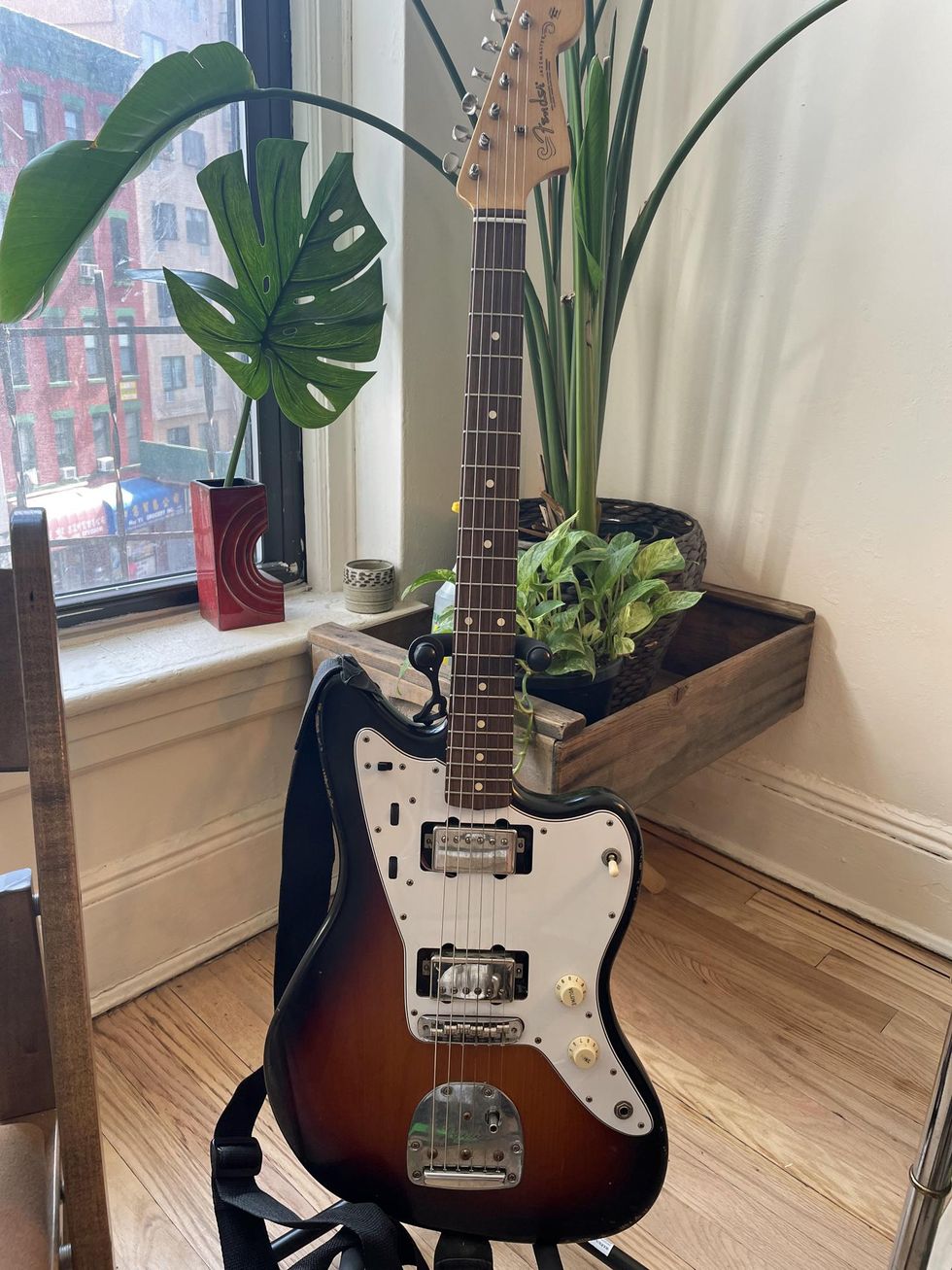
During the band's original '90s heyday, Schreifels would get down on bucker-brandishing guitars like Les Paul Deluxes and H-S-S Strats. He saw losing his Gibson overseas (and his body deterioration from playing heavier instruments) as a sign. Eventually the transition dovetailed into a relationship with Fender, and he began bonding with their humbucker guitars, like the aforementioned Cobain Jag. He scored the above Fender Classic Player Jazzmaster Special, but didn't fall completely in love with its stock JM Special Design Hot Single-Coil Jazzmaster pickups, so he slammed a set of brand-unknown humbuckers in for a bigger, bolder sound. To enhance its playability, he swapped out the original bridge for a Staytrem.
Fender Player Lead III
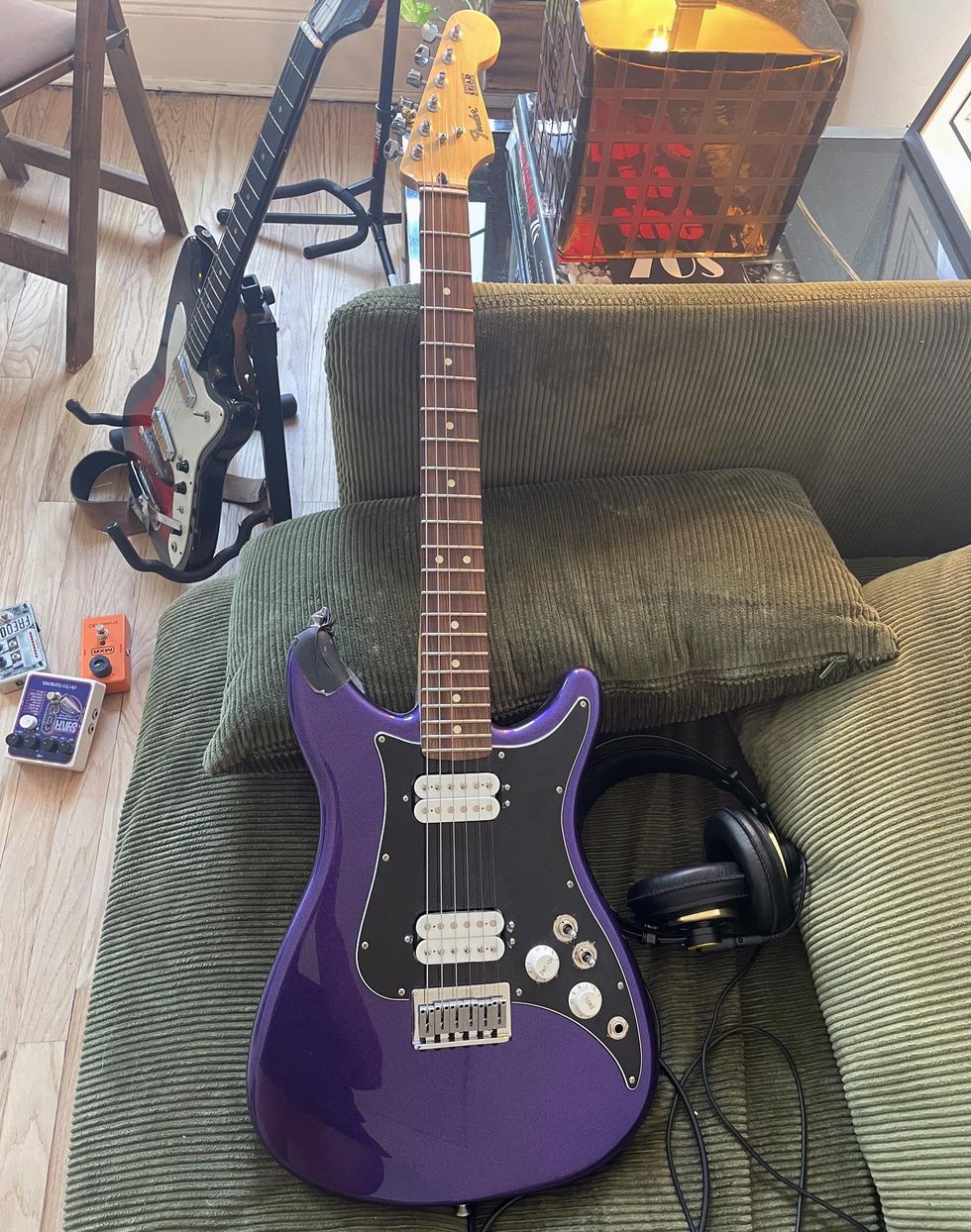
Ahead of recording the new album, Walter spied the announcement of Fender's updated Lead II and Lead III instruments, and was instantly intrigued. He reached out to Fender and they sent over the above Player Lead III model finished in a stunning purple metallic and featuring Player Series humbuckers that can be split.
Fender Blues Junior
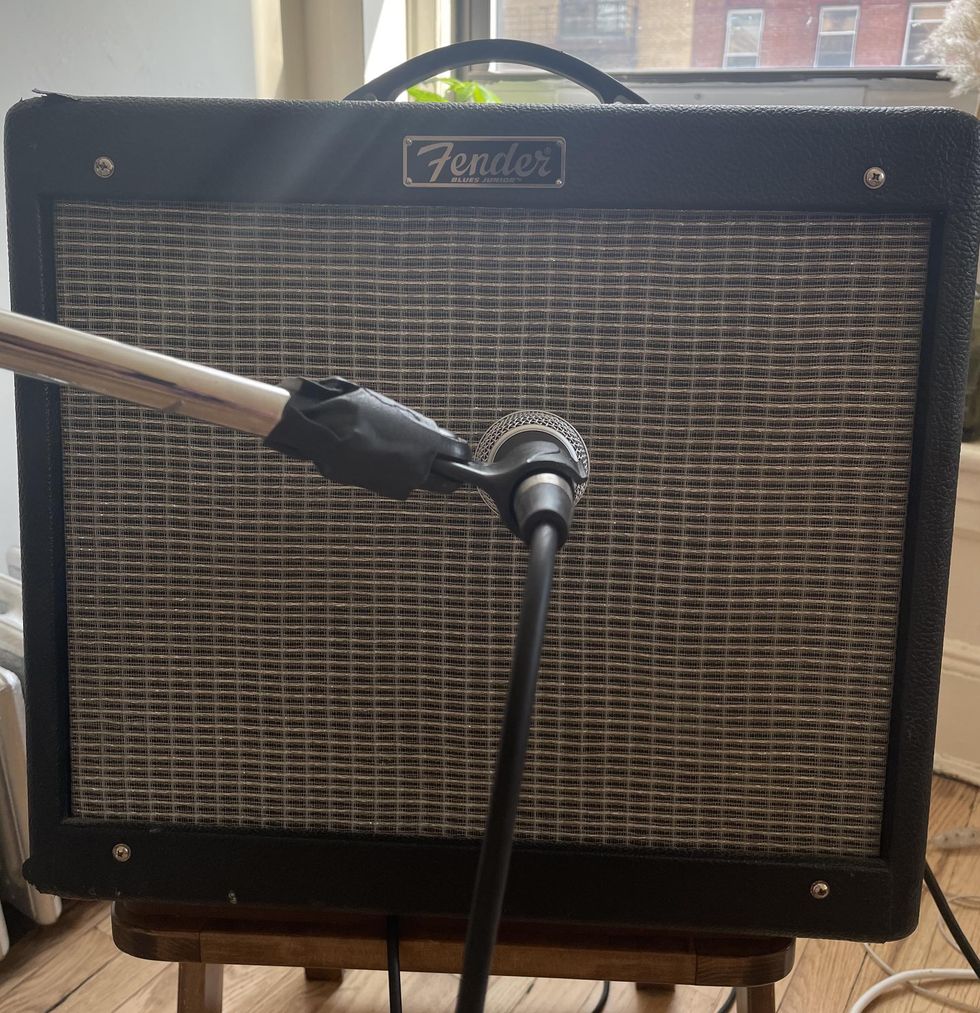
The band's last U.S. tour saw Schreifels using a 50-watt Marshall JMP 2x12 combo loaded with Celestions. He's gotten familiar with and fond of Orange half-stacks, too, but as with his guitars, he's been condensing amps—especially when it comes to the studio. Above is the Fender Blues Junior that resides at his N.Y.C.-based home, but it went recording with him for the new Quicksand album.
Roland Micro Cube
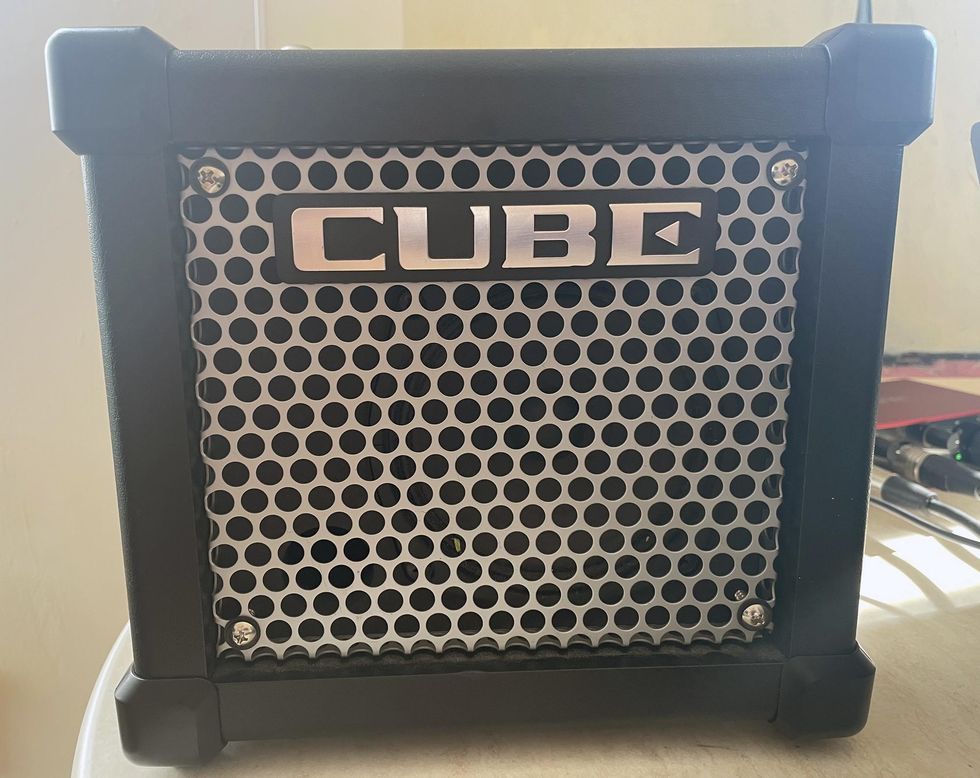
The shocker of his setup has to be this Roland Micro Cube combo. In the Rundown, he remarks that "it's just so damn convenient." Because of its basic layout and built-in effects, it allowed him to forget about the gear or tone, dial in some reverb, delay, or chorus, and try to usher out the ideas in his head. And when tracking overdubs with it for Distant Populations, he used its "cheap" sound as an asset to layer in another accent.
Walter Schreifels' Pedalboard
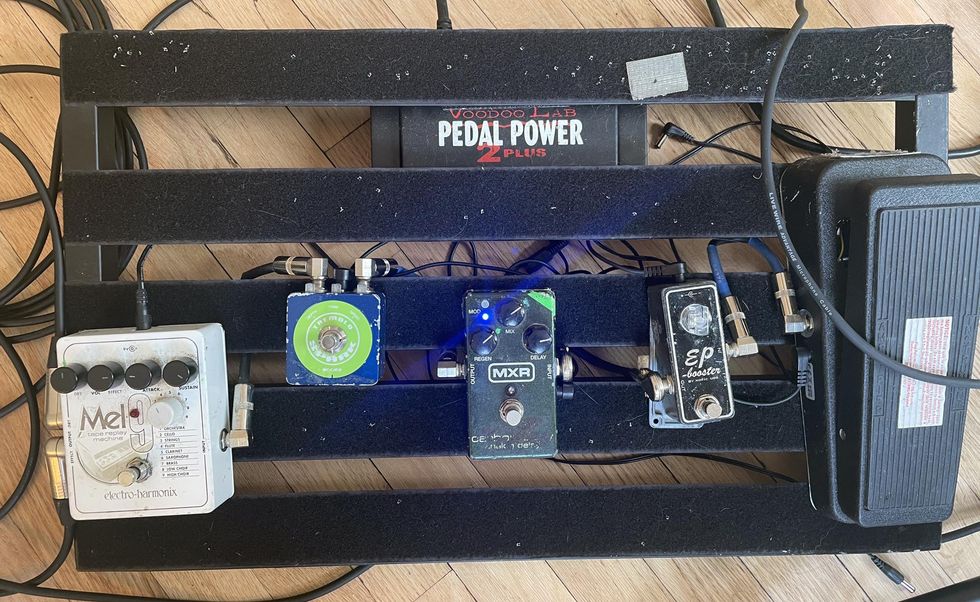
This is a pedalboard that's 20-plus years in the making. As he admits early in the Rundown, he shunned pedals for much of his early career. The cornerstone of his sparse stomp station is the Dunlop Cry Baby Standard wah. He'll engage the Cry Baby to create tension or lock the sweep to alter the guitar's EQ and voice.
The next two are industry standards and seen in countless Rundowns: the Xotic EP Booster and MXR Carbon Copy Delay. For a little wobble and wiggle, he'll kick on the Mooer Spark tremolo, which he's kept around because he says the depth control is special. And the Electro-Harmonix Mel9 still finds a home on his board, because of its role in Interiors. It usually toggles between the strings and orchestra modes, but he has found some inspiration in the flute mode, too.
Already rests on a Pedaltrain Novo 24 board and is juiced by the Voodoo Labs Pedal Power 2 Plus.
Walter Schreifels' Bonus Pedals
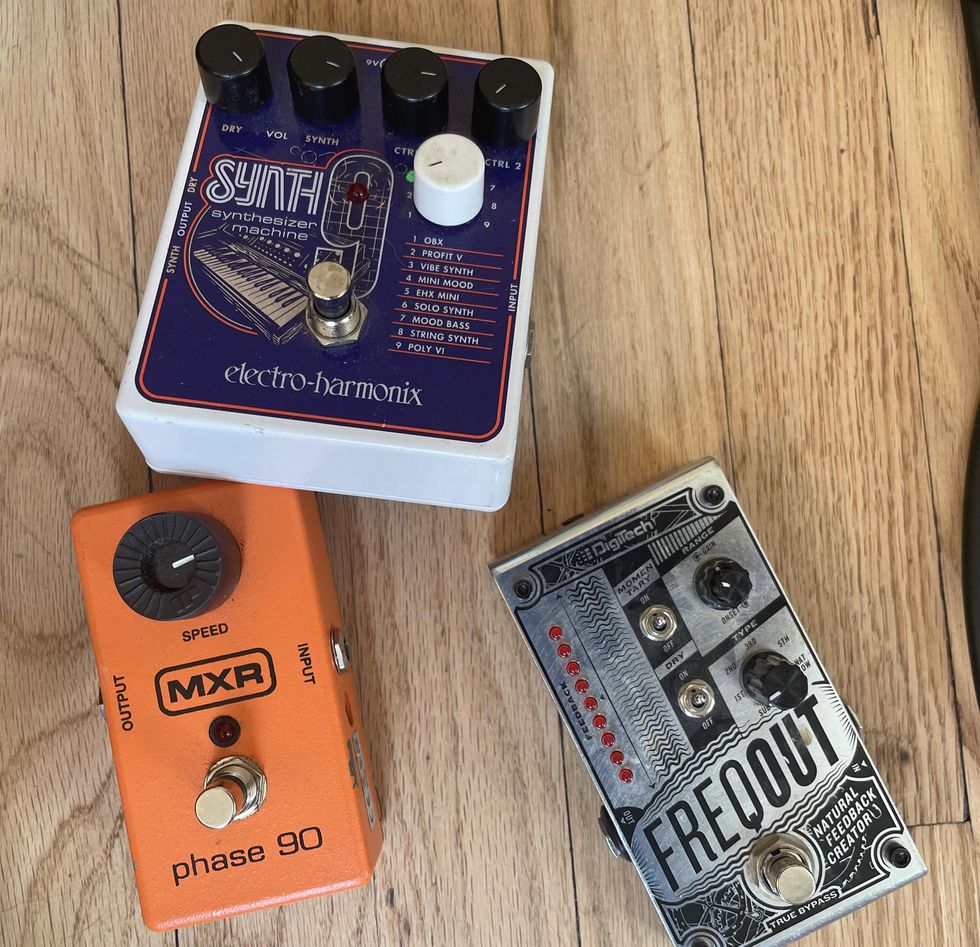
Here are some pedal provocateurs that made notable spotlights on Distant Populations. The EHX Synth9 creates the aerial-assault warning sirens on "Missile Command," the MXR Phase 90 headlines the song "Phase 90," and the DigiTech FreqOut adds eerie, phantom feedback.





![Rig Rundown: Russian Circles’ Mike Sullivan [2025]](https://www.premierguitar.com/media-library/youtube.jpg?id=62303631&width=1245&height=700&quality=70&coordinates=0%2C0%2C0%2C0)
















![Rig Rundown: AFI [2025]](https://www.premierguitar.com/media-library/youtube.jpg?id=62064741&width=1245&height=700&quality=70&coordinates=0%2C0%2C0%2C0)


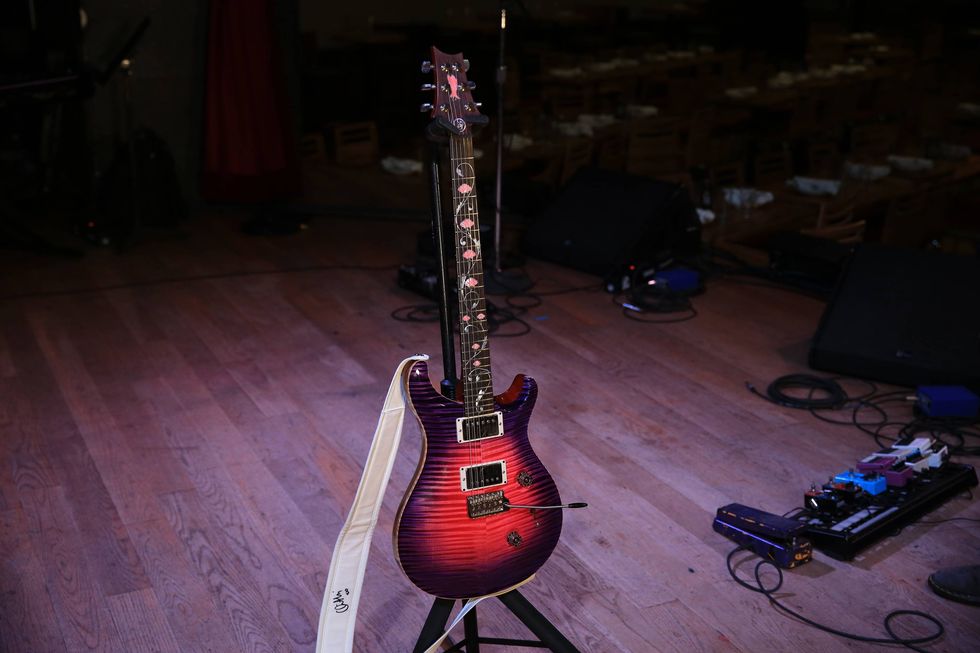
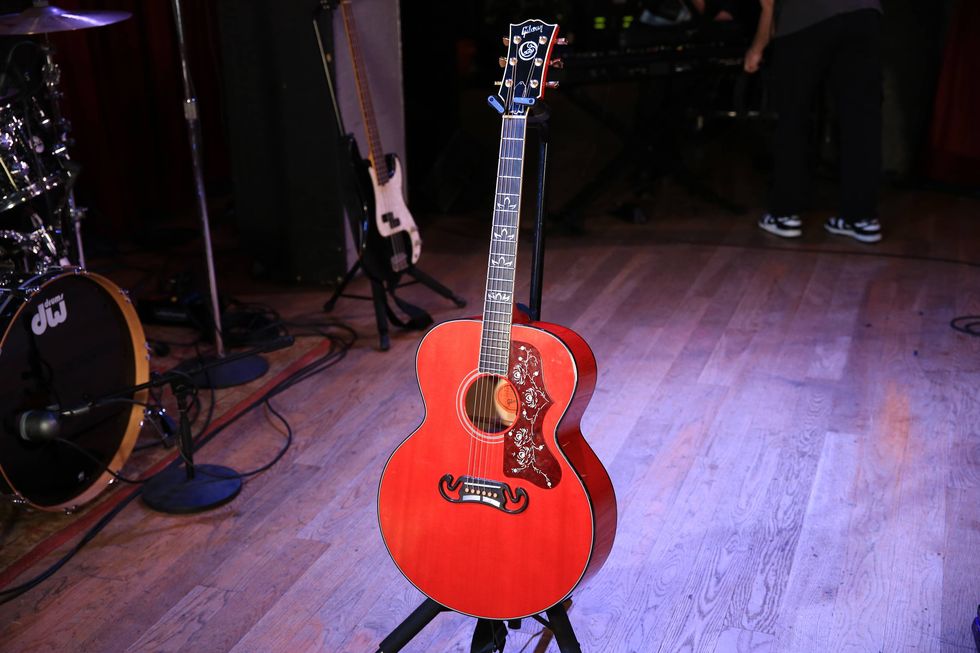
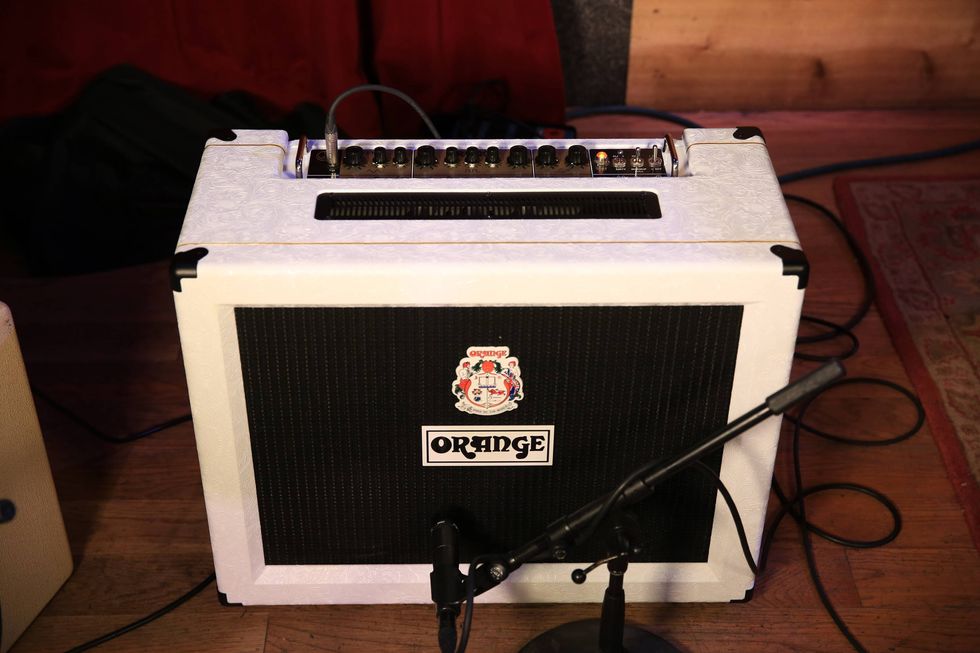
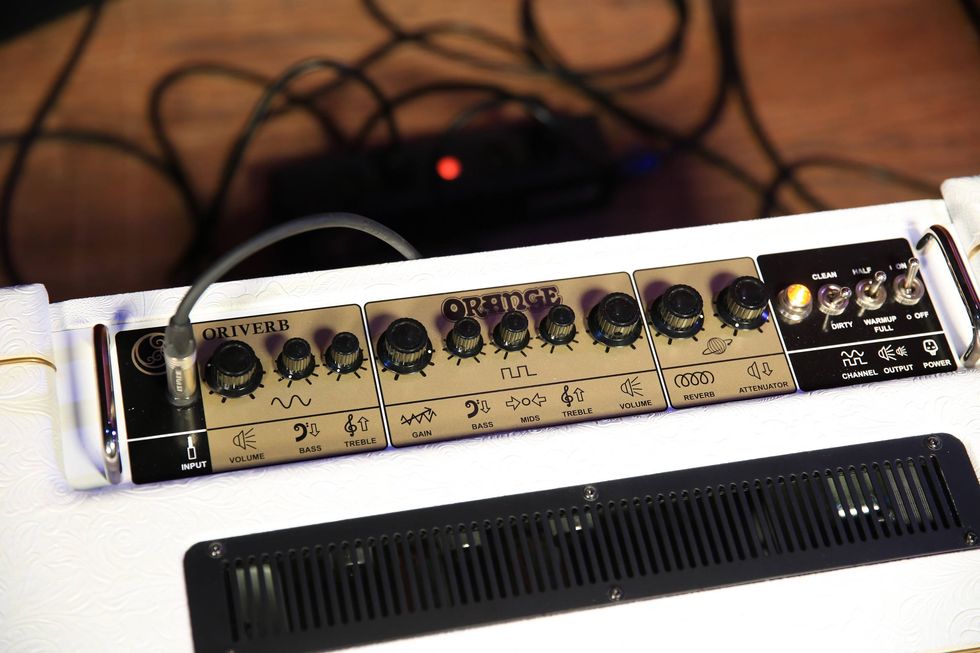
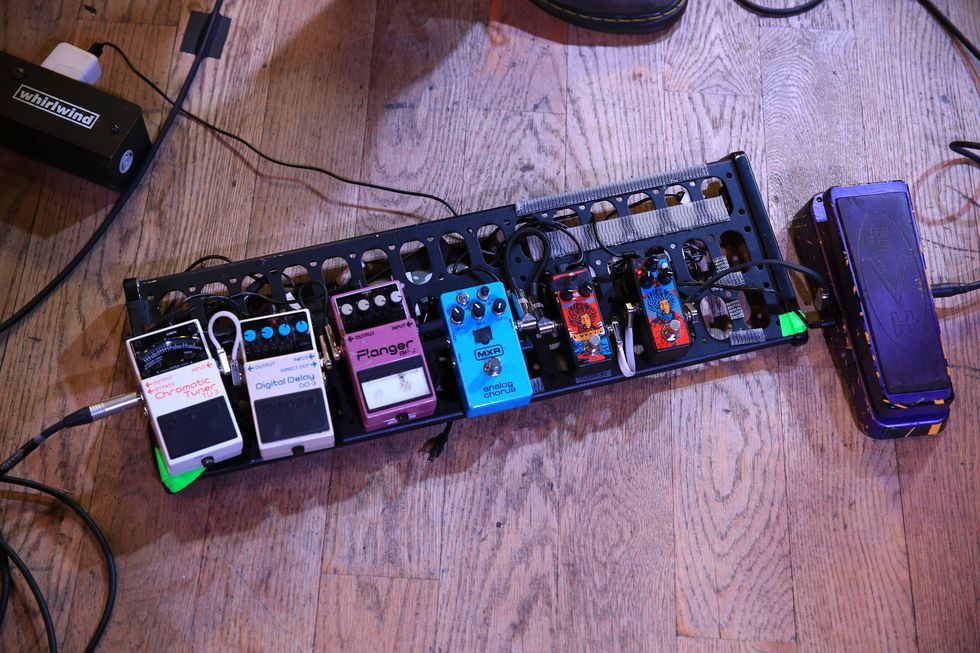









 Zach loves his Sovtek Mig 60 head, which he plays through a cab he built himself at a pipe-organ shop in Denver. Every glue joint is lined with thin leather for maximum air tightness, and it’s stocked with Celestion G12M Greenback speakers.
Zach loves his Sovtek Mig 60 head, which he plays through a cab he built himself at a pipe-organ shop in Denver. Every glue joint is lined with thin leather for maximum air tightness, and it’s stocked with Celestion G12M Greenback speakers.







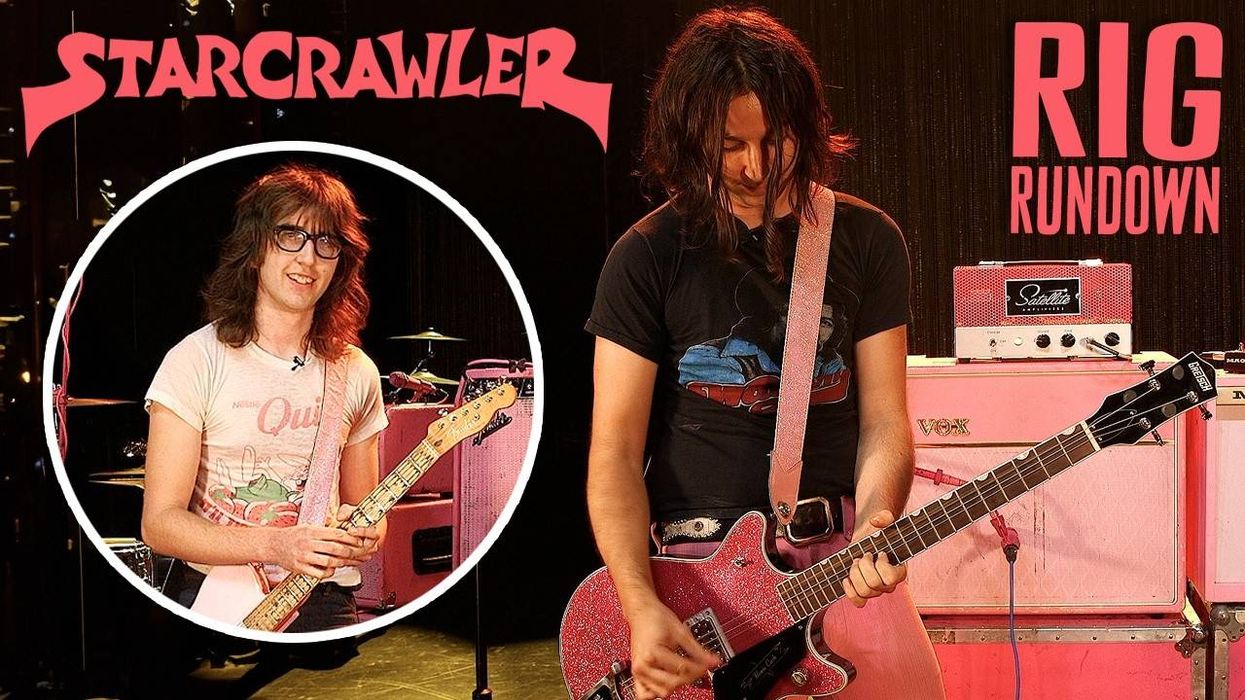
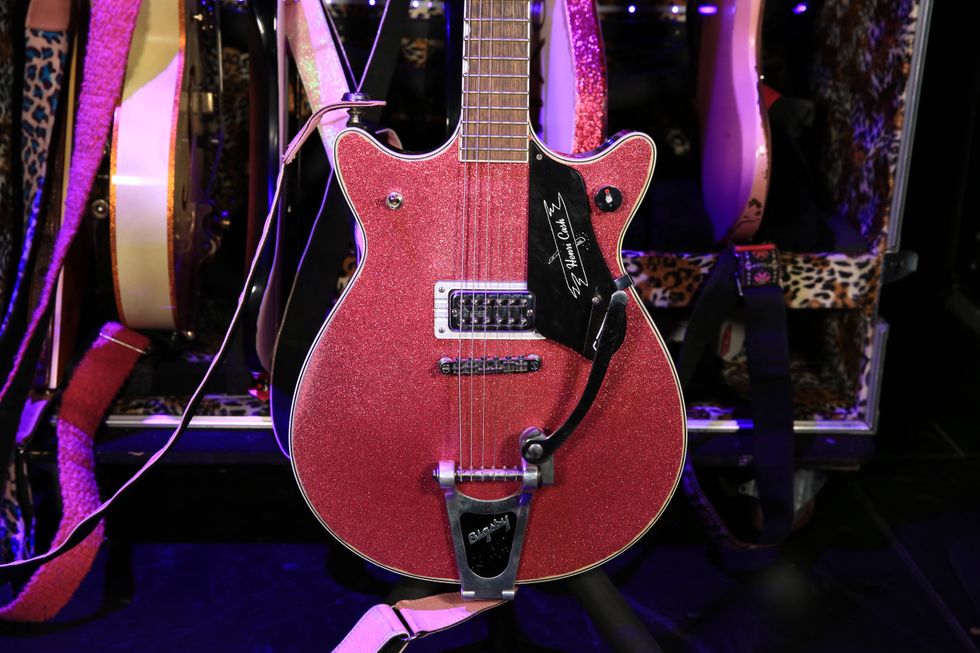
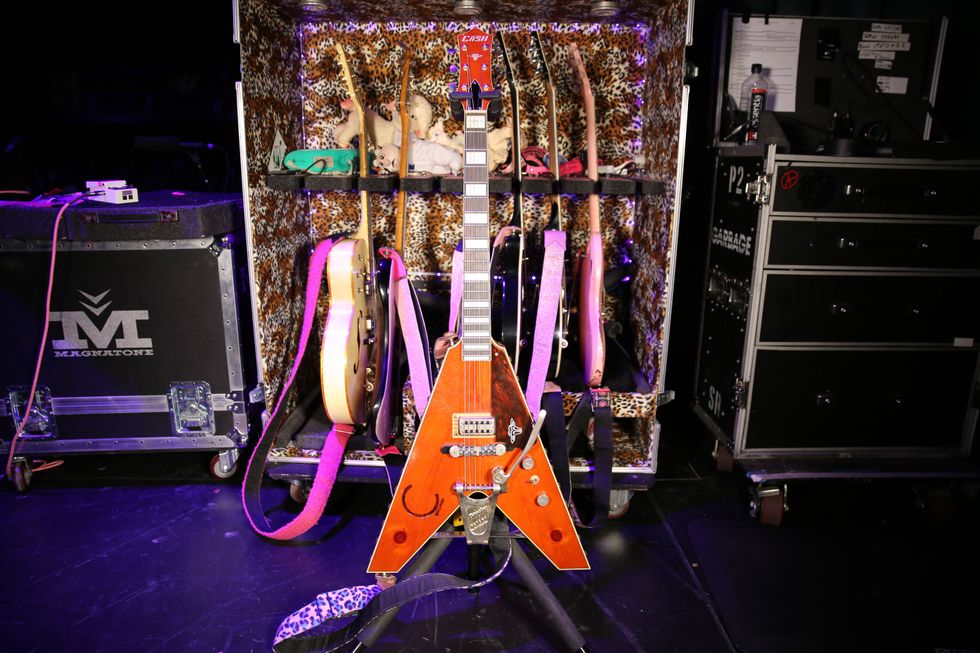
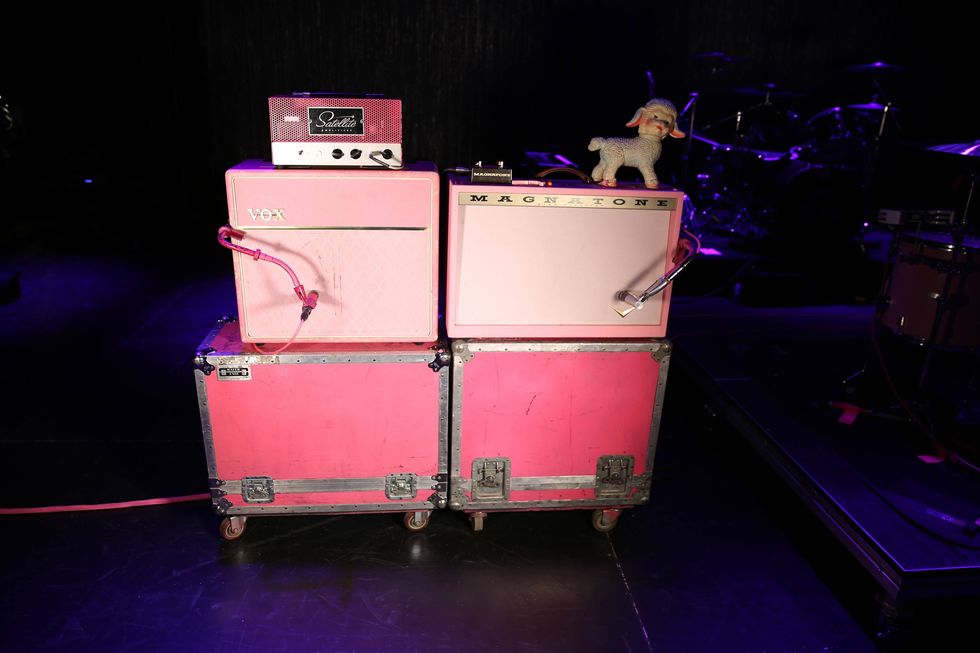
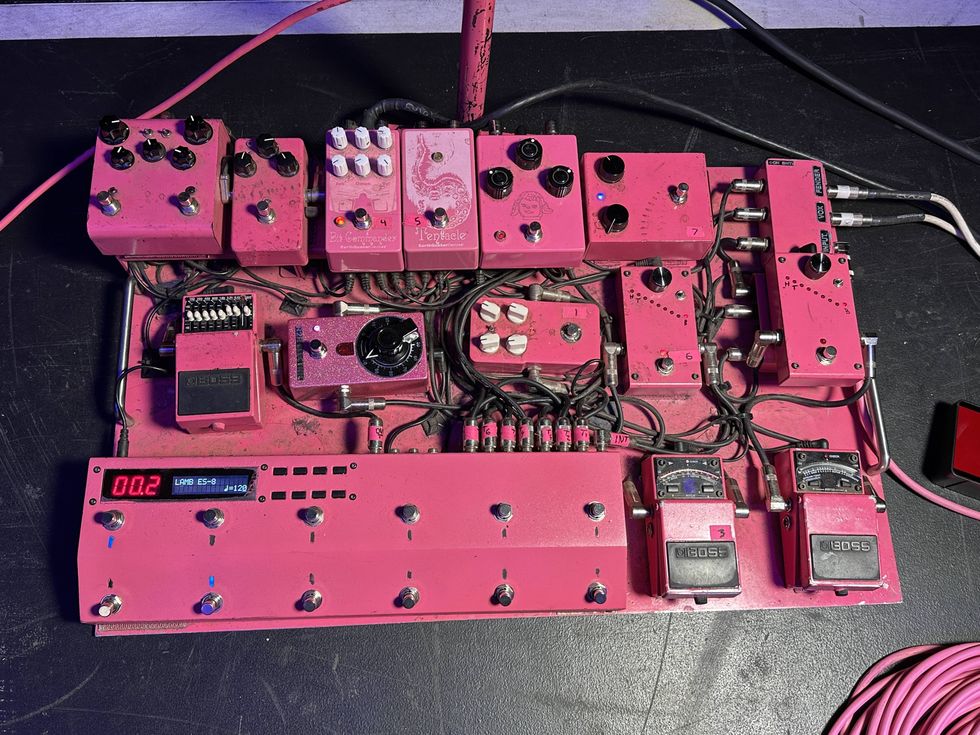
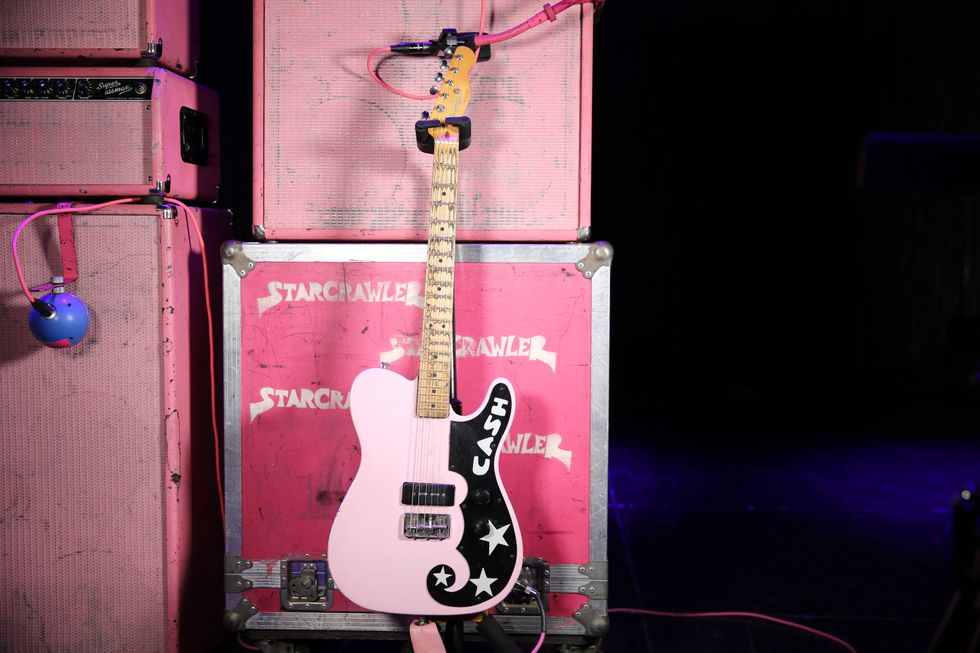
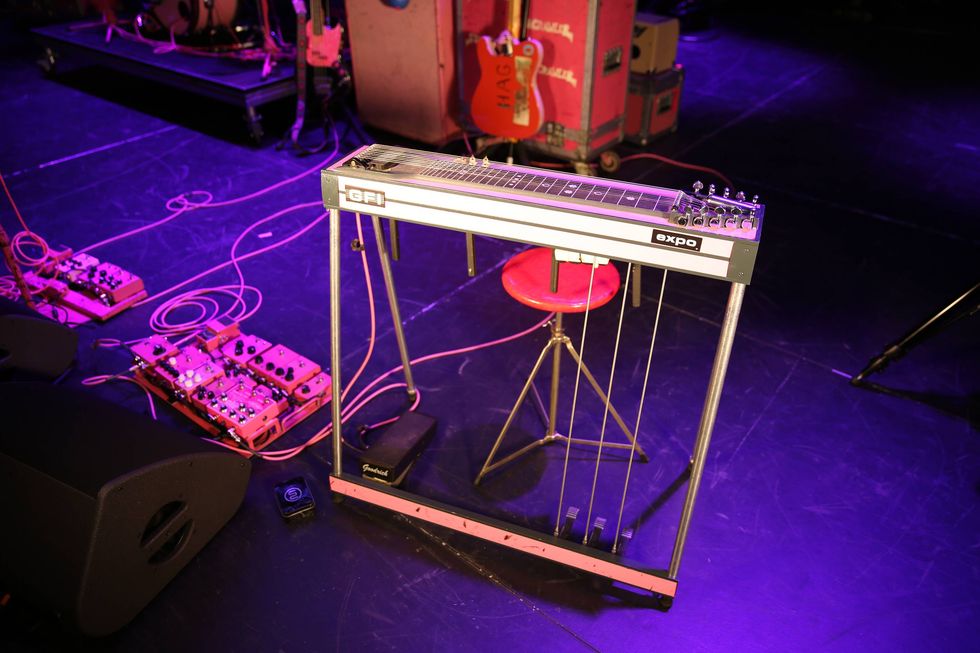

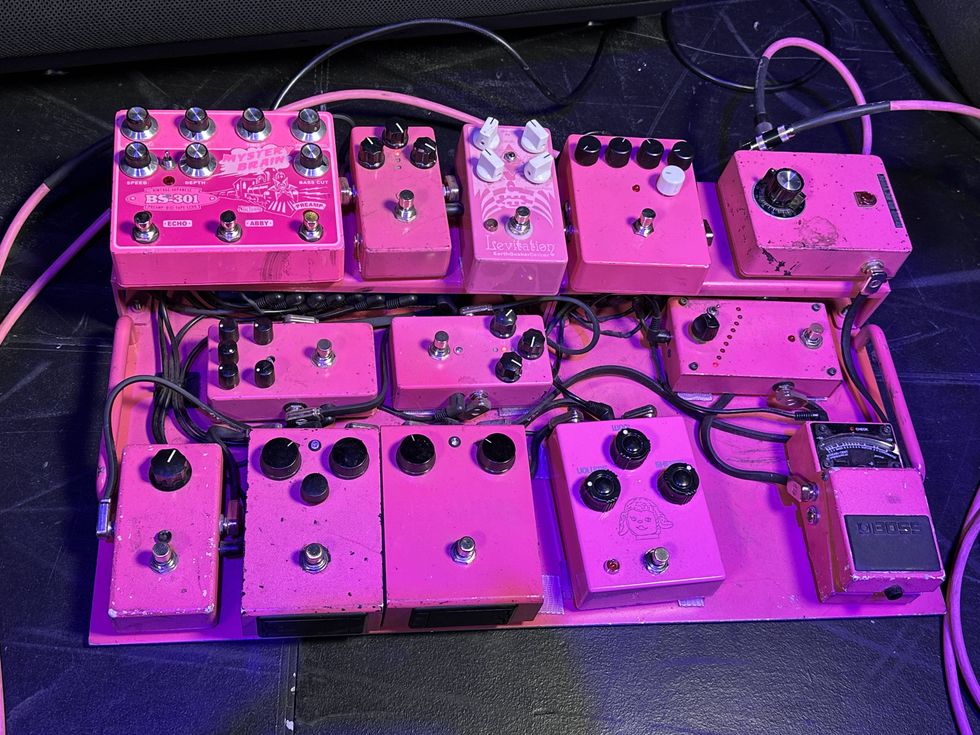

![Devon Eisenbarger [Katy Perry] Rig Rundown](https://www.premierguitar.com/media-library/youtube.jpg?id=61774583&width=1245&height=700&quality=70&coordinates=0%2C0%2C0%2C0)






